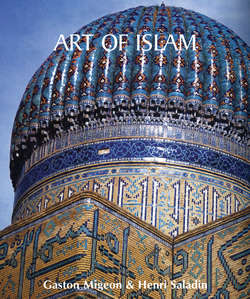Читать книгу Art of Islam - Gaston Migeon - Страница 23
На сайте Литреса книга снята с продажи.
Architecture
C–Iran and the Persian School
Bricks
ОглавлениеUnbaked brick constructions are essentially very fragile. From early times, humans initially saw the need to preserve their facings by covering them with baked bricks. A short while later, enamelled bricks were used, and it may just have been by chance, a result of accidental extreme baking, that ancient Chaldean architects discovered the possibility of glazing the external surface of bricks and took advantage of this feature to improve on solidity and beautify the decoration of their buildings.
Since bricks do not easily lend themselves to projections, various skills are therefore required to create a play of shadows and lighting effects, either by using bricks laid out like the teeth of a saw or corbels. Corbels, however, cannot produce solid projections without a special arrangement that enables the creation of successive supports, whose bond stems from the type of materials used. Such is the case with the ajouré lattices of the minaret of the Great Mosque in Mosul, for example, which were intended to make the walls sufficiently solid without rendering them any lighter, or the creation of stalactites – a peculiar element in Islamic architecture, produced by a series of different squinches stacked up like corbels.
The Registan, 17th century.
Samarkand.
The Sher-Dor Madrasa, 1619–1636.
Samarkand.
The Gur-e Amir Mausoleum, 1403–1405.
Samarkand.
